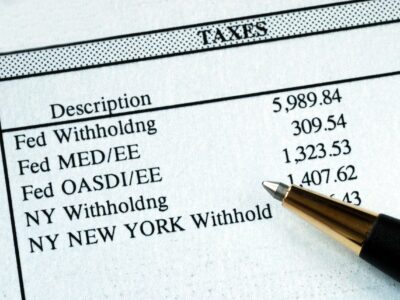26 Jul 2024 Difference Between Purchase Order and Invoice

Likewise, freelancers and online service providers might receive a purchase order from their clients for the services they will provide and send a purchase order for supplies they need. The next step after a purchase order is received by the seller is to fulfill the order. This means the seller will ship the goods or services to the buyer. The seller will issue an invoice to the buyer after the goods or services have been shipped. A purchase receipt typically only includes the date of receipt and the quantity of goods or services received. The person responsible for creating an invoice in your company will depend upon your company’s policies and procedures.

How Automated Invoice Matching Saves Your Business Money and Time
- Using purchase orders helps businesses maintain better control over their finances.
- So next, we’re going to a look at the differences between invoices and purchase orders and when you should use each.
- Both purchase orders and invoices are integral to efficient financial management in businesses.
- Therefore, it is essential for organizations to have clear processes in place for issuing, managing, and tracking purchase orders and invoices.
- Delivery information is crucial because it provides details that aid smooth logistics and ensure that the order is correctly fulfilled.
Brex also provides a Brex Card issued by Sutton Bank, Member FDIC, pursuant to a license from Visa® U.S.A. Inc. The Brex Mastercard® Corporate Credit Card is issued by Emigrant Bank, Member FDIC, Fifth Third Bank, N.A. Member FDIC, and/or Airwallex (Netherlands) B.V. Learn how our spend platform can increase the strategic impact of your finance team and future-proof your company.
Introducing the Entrepreneur Who Has Banished Leathers for Making Timeless Sustainable Accessories
- This not only notifies your company that a payment is due or will be due upcoming, but it also helps keep a detailed documented trail of your payments with details of the purchase.
- Both are vital to the procurement and selling processes and provide a record of different but necessary steps in a transaction.
- Together, purchase orders and invoices ensure nothing gets lost along the way.
- To stay compliant, you must understand the differences between these two documents.
- With their similarities, it’s easy to see why many get the two confused.
It should contain the product name, specification, and quantity as appropriate. All of these should be coherent with what is on the purchase order to maintain accuracy. Once a buyer can verify that the quantity and specification of goods delivered to them is correct, they can easily make payments quickly. Purchase orders are crucial because it indicates a buyer’s intention to buy a good or service as it helps them control and track their orders till the transaction is fulfilled. Usually when creating a purchase order, a contractual agreement is reached by both parties and this helps ensure that they https://www.bookstime.com/bookkeeping-services/chicago both understand the terms and conditions of the transaction.
What Information is Contained in a Purchasing Order?
To be precise, that’s the definition of a sales invoice, but it is the most popular type of invoice used. As you’ll see later, there are other types of invoices and many types of sales invoices. You can see that the purchase order and the purchase order number are important tools for both buyers and sellers alike. The receiver also references the purchase order number off the shipping forms and punches the delivery date into the company’s computer system. Shortly after their last conversation, Dan authorizes his accountant to create a new purchase order. The creation of and referencing of a purchase order can save a lot of time for both a buyer and seller.
Understanding Sales Invoices
See transactions the moment they occur and track spending globally — across T&E, procurement, and more. Identify trends, make policy adjustments, and increase employee accountability. Purchase order recipients are sellers who review, accept, or reject the terms. In the event of an audit, invoices serve as evidence of precisely what the company paid for. Purchase orders are a formal means for all parties engaged in the acquisition process to define the procedure.
You may be selling raw materials, supplies, or wholesale inventory. Alternatively, you may offer a variety of services or digital products. Using both documents helps you and your customers get what you what is the difference between an invoice and a purchase order brainly need and as expected.

How to Manage Business Invoices

By analyzing this data, you can create more accurate budgets and forecasts, leading to better resource optimization. This information also helps your business make more strategic financial decisions. Yes, you can issue your customer a digital copy of an invoice instead of a printed one.
Who Creates An Invoice?
Anything you can do to make buying and selling products/services is worth doing. According to one study done by Rubberstamp.io, manual processes (i.e. Excel spreadhseets) increase the likelihood of spending errors. Understand how to extract text from images via Python without Tesseract and how we execute robust text extraction and document understanding for your business. Some large companies don’t send the PO but just notify the vendor to log into their procurement portal, https://x.com/BooksTimeInc examine the PO, and either accept it with an e-signature or reject it. A PO is a critical document in the purchasing process of a business. This distinction helps companies like Kloo keep their operations well-organised, ensuring that they order and pay for what they actually need and receive.


